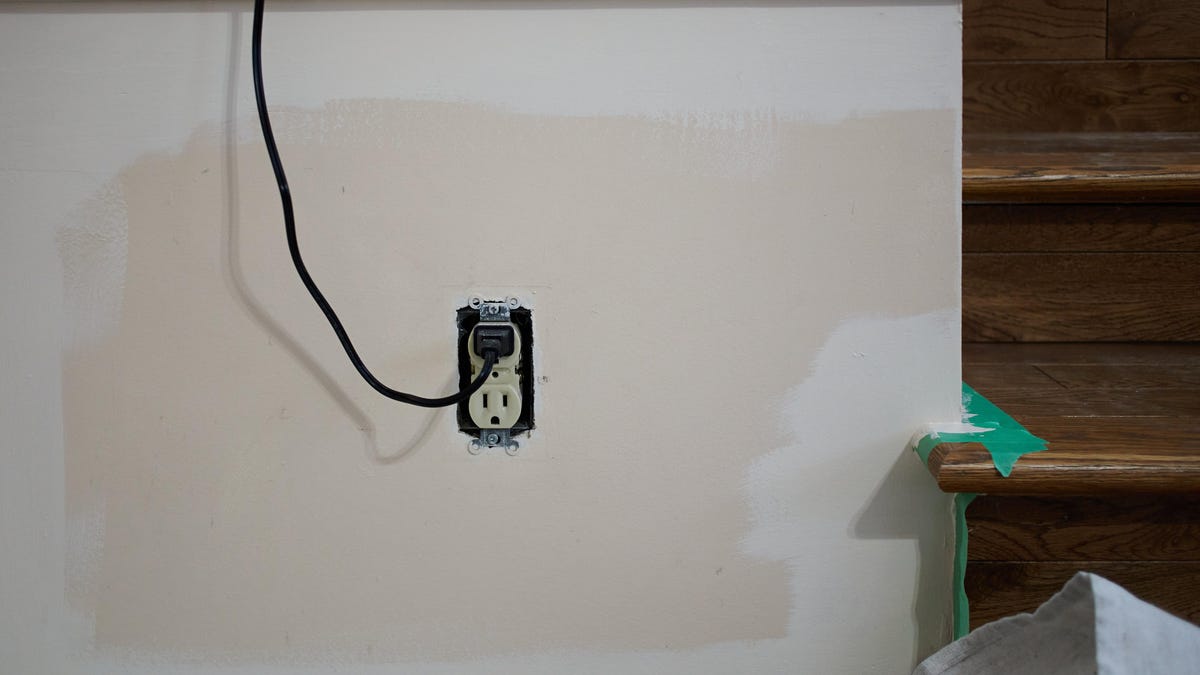The Best Ways to (Safely) Hide Outlets

It may be hard to imagine, but there was a time when electricity was new and no one had electricity running through their walls. Everyone alive today was born into an electrified world, and most of us take it for granted that we can control a wide range of electrical devices simply by plugging something in and pressing a button.
Of course, you have to pay for electricity. There is a literal price in the form of the utility bill that appears every month. There is also a non-zero chance of an electrical fire and the risk of electric shock if you decide to install wiring in your home yourself. But there’s another price to pay: the distracting presence of outlets and their covers. Chances are, the outlets in your home are located in the middle of the walls and are covered with ugly plastic plates that become eye-catching, disrupt the symmetry of your interior, and collect dust and dirt.
However, take heart. If you suddenly realize that the appearance of your home depends on the appearance of the outlets, you can hide them in a variety of ways.
Code Requirements
Keep in mind that your area has building codes based on the National Electrical Code that dictate how many outlets are required in different rooms (usually based on their size and wall length) and what outlets are needed (wet areas). kitchens and bathrooms typically require GFCI outlets with built-in circuit breakers). This means you probably can’t (legally) just remove outlets from your walls if you don’t need or want them. If in doubt, contact a licensed electrician. You’re also almost certainly not legally allowed to “bury” a hot socket in the wall, so if you’re tempted to hide the sockets by covering them with drywall, think again.
So, you’re probably stuck at your retail outlets. How can we at least make them less obvious?
Move to the floor
One trick is to move the outlet to the floor . Although an outlet in the floor may be just as visible as an outlet in the wall, this will remove it from view, allowing you to have clean, unbroken walls. This also has the benefit of not having power plugs snaking all over the place, since you can run them along the bottom of walls or keep them tightly wound near the appliances they connect to.
Pop-ups from counters
Another option for hiding electrical outlets is to replace them with retractable outlets hidden in kitchen countertops, bathrooms, or other furniture pieces. There are many options for different looks and different installations, but keep in mind that buying one off the shelf and installing it on your kitchen countertop may not be completely hidden —their lids may not exactly match. For a more seamless (and more expensive) look, you might consider something like the S-Box Outlet, which uses the same material as your counters to hide.
Place in (or under) a closet
A great way to hide an outlet is to move it into a closet. You should check your local building codes, but in general this is fine as long as you follow all the normal electrical code requirements. Keep in mind that many local building codes require minimum required outlets in kitchens and bathrooms to be “accessible,” and an outlet inside a cabinet may not count toward that minimum.
If that doesn’t work, you can also add some outlets under cabinets or under countertops using a track system.
Matching cover
If moving your outlets isn’t an option, your next option is to mask them off. This can be done in several ways: from cheap and simple to expensive and sophisticated:
- Paintable plates. The cheapest option, especially if the outlets are on a painted wall, is to buy paintable outlets and paint them to match. Even though they are still visible, this will go a long way to hiding them in plain sight. You can also apply matching wallpaper to the outlet covers to help them blend in with the surrounding wall.
- Socket covers. An option for tiled walls is a slab covering that can be matched to the existing splashback, color or wall design, such as Simplicover . All you need is a sample of the tiles to be used that can be shaped into the desired shape. A slightly more elegant solution is offered by companies such as Trufig , Bocci and Designmod , which allows the sockets to be recessed and then sealed flush, making them almost invisible. However, for recessed outlets, you may need to hire a professional to customize your existing installation.
Accessories
The simplest (and cheapest) solution? Hide these outlets behind things. A side table next to a sofa or bed, a vase or cookie jar on the kitchen counter, or a clock or tablet on a stand in the bathroom can all be positioned to hide an outlet. After all, out of sight is out of sight, and if you can’t see the outlet, does it matter that you didn’t spend a weekend and some money getting it out of the way?